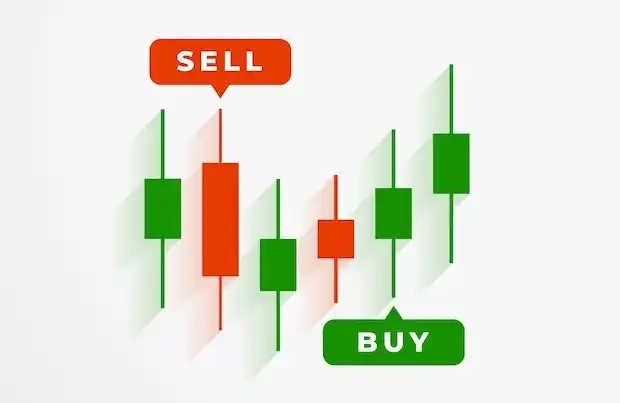Variant co-founder: How does the FTX incident affect our view on user ownership?
Original Title: "Long-term Perspective: Web3 and User Ownership"
Original Authors: Lijin and Jesse Walden, both co-founders of Variant
Translated by: Block unicorn
Recently, the dramatic collapse of FTX has dealt a blow to the views and trust in the cryptocurrency industry. We feel sorry for those who have suffered economic losses due to the recklessness and fraudulent behavior of others, and we are angry about the collateral damage this event has caused to the industry's reputation. At the same time, the overly negative media coverage - including claims that this is the end of cryptocurrency and that the industry should be burned down - obscures the potential of cryptocurrency as a tool for positive impact on the world, and suggests that external emotions are often disconnected from the actual progress and fundamentals of Web3.
Reflecting on these events, we turn to our founding thesis as the foundation. Launched in 2020, Variants believes that cryptocurrency will be the foundation of the network owned by users, where products and services will turn their users into owners. This idea has enormous potential for how we build a new network that better serves user needs and has a broader impact on economic fairness.
How do recent events affect our argument about user ownership? We must understand that FTX is a failure of traditional financial institutions, which reminds us why we need to push web3, especially DeFi, forward. We still believe that cryptocurrency has the potential to build a more fair and elite internet, but as an industry, we need to refocus on the core principles of web3.
Starting from first principles, the foundation of web3 is open-source software that transparently operates on autonomous blockchains, such as Ethereum, which minimizes the need for trusted third parties. At the application layer, automated smart contracts eliminate the need for companies and institutions that rely on manual management, whose opaque decision-making can lead to systemic failures, as we recently saw with FTX.
Open and automated code has opened up a new way to build trustworthy, neutral, and user-owned internet platforms. User ownership is achieved through Tokens - similar to value packages encoded on the blockchain. It is important to note that when we say "Token", we are not referring to speculative meme coins - we are talking about a complete innovation in internet ownership.
Tokens are a native property system of the internet: a way to own a part of the internet itself. They can represent any type of digital asset, from art to music, to virtual land, to a portion of the internet products and services used by a person.
Like data packets,
Token
can be distributed programmatically to anyone, anywhere.
Token
's application is to reward users for participating in projects and incentivize them to contribute to growth. This reflects the practice of Silicon Valley decades ago, where stock options were granted to motivate and reward employees. In early encrypted networks such as Ethereum and Bitcoin, developers and technical personnel were rewarded with
Token
for their contributions. As with most technology, once developers and technical personnel lead the way, the rest of the internet quickly follows suit.
Today, we are still far from realizing the ideal of a token-driven, user-owned, network-led internet. Currently, most token designs have failed to fully adjust their incentive mechanisms to unleash faster and more sustainable growth than centralized companies. In some cases, bad actors use tokens to spread outright scams. However, many experiments have made incredible progress, and it is helpful to explain the tokens on the market today along a spectrum: from those that are crucial to the operation of a product or protocol, to those that offer legitimate and convincing utility promises, to extreme economic experiments, and finally to outright fraud and scams.
On one hand, there are Tokens that are essential to user experience, including the operation of products or protocols. For example, ETH, the native Token of Ethereum, is used to ensure network security and for transaction fees. More broadly, it serves as a form of internet currency in native applications within the ecosystem. In the middle of the spectrum are projects that attempt to gradually decentralize, with the goal of giving users ownership and control over the products and protocols they use (such as Uniswap). There are also economic experiments that use ownership as a guide or super-scale mechanism (such as DIMO), as well as Tokens that serve as quasi-equity for fundraising or profit sharing, but without any investor rights (such as Constitution DAO).
At the extreme end of the spectrum, some Token designs are so centralized that they are easily exploited by issuers - this design flaw introduces a single point of failure. FTX's FTT Token belongs to the last type - but what caused FTX and Alameda Research to fall was not the Token design, but the unethical behavior of those in charge. Like previous waves of new technology, the characteristic of the innovation hype cycle is radical experimentation, breakthroughs, and unfortunately, opportunists and scammers taking advantage of users' lack of information, until the former ultimately succeed and the industry matures.
As long-term investors, we spend time collaborating with teams who are interested in using Token to allocate new forms of ownership and control and to achieve new product experiences. While many of these projects are iterating towards community ownership and operation of networks, the game manual for optimizing user behavior incentives is still being written, which can lead to long-term sustainability and competitive advantage.
The path to the network owned by users has never been easy or direct, but there are some clear lessons after the FTX crash.
For users, the lesson to be learned again is "invest in what you know." The world of user ownership is still very young, and there is no comprehensive guide to evaluating Tokens from a user's perspective, so it can be a challenge to be familiar with what you own. However, previous investments in the internet world were limited to professional venture capital firms, and web3 enables all consumers to invest through Tokens . Although this comes with risks, research and responsibility are required, user ownership is a new type of internet-native work that aligns with the trend of new opportunities for making money and creating wealth online.
For builders, we hope this moment can inspire more focus on the first principle design of products around Token, with a focus on ownership experience. The design of Token can unlock new product experiences for end users, and the product can solve a key problem for end users. Our philosophy is that ownership is a huge design space that should be rooted in user needs, whether it is a desire for status, economic consistency, community, or other aspects. If Token is launched without considering user needs, the project may confuse users about the role of Token. At the same time, Token design needs to be combined with accessible education to help users understand what they actually own more clearly.
In order to fully realize the potential of web3 as the next iteration of the internet and empower users as owners, there is still much work to be done. Building decentralized systems that give power to users is a challenging task, and the rules of the game are still being clarified. However, it is now clearer than ever that user ownership is a powerful new tool that is worth our efforts to utilize. Our commitment to true user ownership is the reason Variant was founded, and it is why we are steadfast in our research, funding, and promotion efforts.
Original article link
Welcome to join the official BlockBeats community:
Telegram Subscription Group: https://t.me/theblockbeats
Telegram Discussion Group: https://t.me/BlockBeats_App
Official Twitter Account: https://twitter.com/BlockBeatsAsia


 Forum
Forum Finance
Finance
 Specials
Specials
 On-chain Eco
On-chain Eco
 Entry
Entry
 Podcasts
Podcasts
 Activities
Activities
 OPRR
OPRR







